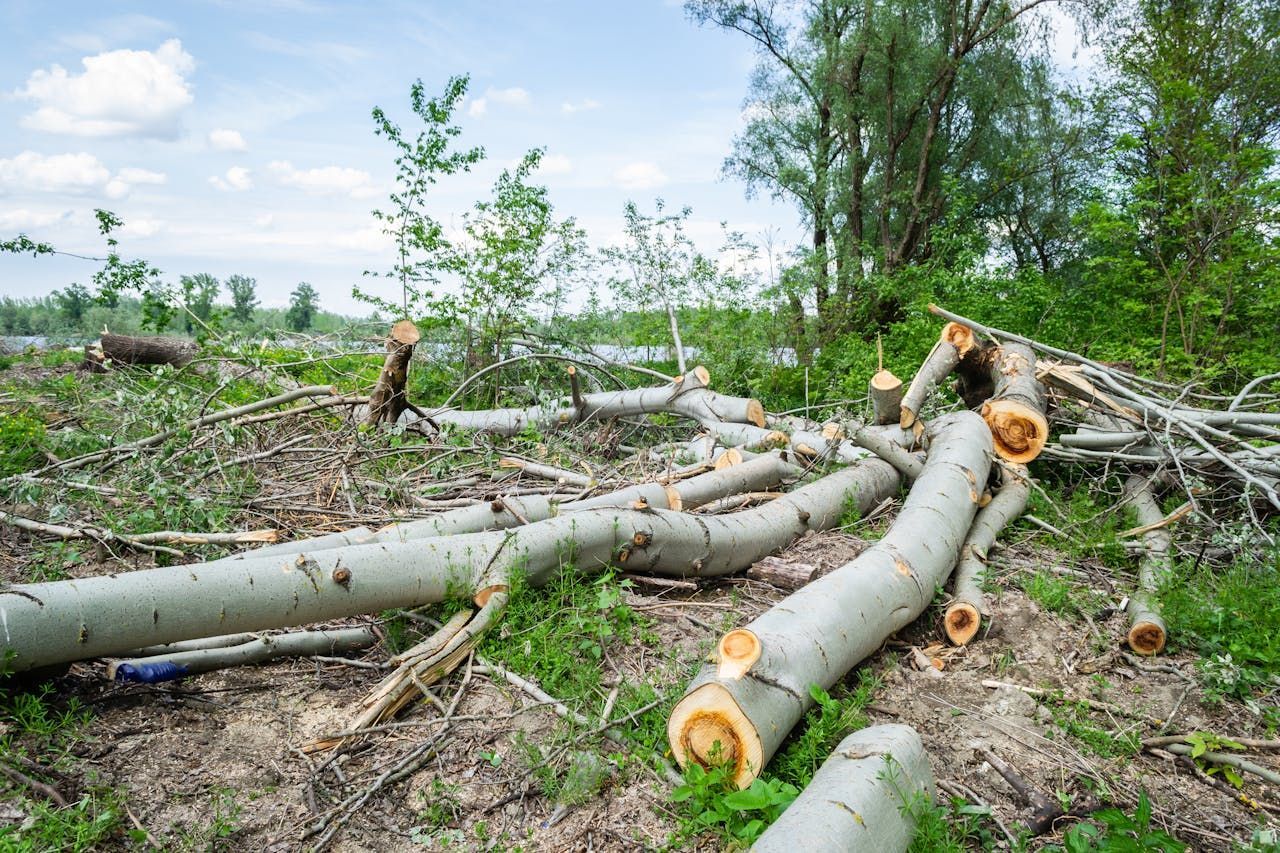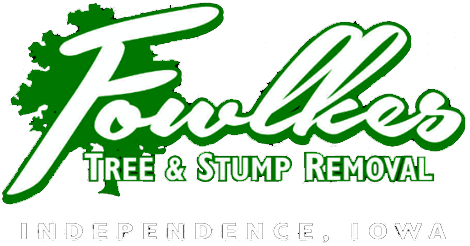From Hazard to Harmony: Why Tree Removal is a Smart Investment in Safety

Table of Contents
- When a Tree Becomes a Threat
- Why Tree Removal Safety Should Never Be Overlooked
- Common Dangerous Tree Signs You Shouldn't Ignore
- What Makes Safe Tree Removal Truly Safe?
- Professional vs. DIY: What’s the Right Choice?
- What to Expect During a Tree Removal Job
- Preventing Future Hazards Through Smart Landscaping
- Final Thoughts: Making Your Property Safer for Everyone
Key Takeaways
- Dead, diseased, or unstable trees can cause severe property damage or injury.
- Learning to recognize dangerous tree signs can prevent costly accidents.
- Tree removal safety isn't just about taking a tree down—it's about doing it right.
- Hiring experienced professionals ensures safe tree removal from start to finish.
- Investing in proper tree maintenance today can save you big headaches tomorrow.
When a Tree Becomes a Threat
It’s easy to overlook the quiet giants in our yards—until they become a danger. I’ve worked in tree removal for years, and I can tell you firsthand: when a tree becomes unstable, it can go from majestic to menacing overnight. Whether it’s a decaying trunk, overextended limbs near power lines, or roots undermining your foundation, ignoring the warning signs can lead to serious consequences.
In this post, I’ll walk you through what makes certain trees risky, how to spot red flags early, and why prioritizing tree removal safety is a smart investment for your home and family.
Why Tree Removal Safety Should Never Be Overlooked
Removing a tree isn't as simple as grabbing a chainsaw and going to town. There’s real risk involved—for people, property, and even utility lines. Every tree has its own challenges depending on its species, location, and condition.
For example, a large dead oak tree leaning toward your roof isn’t just unsightly—it’s a structural hazard. If not handled with proper rigging,
climbing, and equipment, a single misjudgment can send tons of wood crashing into your living room or tearing down power lines.
Tree removal safety means using precise techniques, professional-grade tools, and, more importantly, a trained eye. You don’t get second chances when you’re dealing with a multi-ton tree suspended above your home.
Common Dangerous Tree Signs You Shouldn't Ignore
Over the years, I’ve seen how often property owners miss early indicators that a tree is no longer safe. Here are some of the most common dangerous tree signs you should be aware of:
Cracks or splits in the trunk
These are often structural weaknesses. Trees with vertical splits can snap in high winds or under their own weight.
Mushrooms or fungal growth near the base
Fungus usually means the internal wood is decaying. That means your tree may be rotting from the inside out.
Leaning trees
A tree that’s leaning more than 15 degrees from vertical may have root damage or shifting soil beneath it.
Dead branches high in the canopy
Dead limbs can fall at any time, especially during storms. If one part of the tree is dying, it may indicate larger problems.
Heaving soil at the base
This can mean the root system is moving—often a precursor to full tree collapse.
Ignoring these dangerous tree signs can put your home, family, and even passersby at risk.
What Makes Safe Tree Removal Truly Safe?
It’s not just about getting the job done—it’s about doing it without putting people, property, or the environment in danger. Here are a few things that define safe tree removal:
1. Site Assessment
Before any cuts are made, we assess the area. That includes nearby structures, overhead lines, weather conditions, and access points for equipment.
2. Rigging and Roping Techniques
We often use ropes, pulleys, and friction devices to lower branches piece by piece, especially in tight spaces.
3. Tree Climbing vs. Bucket Trucks
In some cases, the safest option is climbing the tree with harnesses and spurs. In others, a bucket truck gives more control and visibility.
4. Clear Communication
Our team always maintains verbal and visual communication during the job. One misstep can turn into an accident if people aren’t on the same page.
5. Clean-Up and Disposal
We don’t just cut and run. Proper disposal of limbs, trunks, and debris is part of keeping the site safe for everyone.
Professional vs. DIY: What’s the Right Choice?
I understand the appeal of doing things yourself. YouTube is full of DIY tree removal videos, and rental stores have chainsaws for cheap. But let me be blunt: unless the tree is small, clearly healthy, and in an open space, this is not a weekend warrior project.
Here’s why hiring a professional matters:
- Insurance: Reputable crews are insured in case of injury or damage. DIY isn’t.
- Experience: We know how trees behave under pressure.
- Tools: Our equipment includes stump grinders, cranes, and safety gear. Most homeowners simply don’t have access to this.
- Training: We’ve spent years learning how to assess risks, handle emergencies, and operate in dangerous conditions.
So if you're wondering whether to handle a removal on your own, ask yourself: “Am I really confident enough to bet my roof—or my life—on it?”
What to Expect During a Tree Removal Job
This is paragraph text. Click it or hit the Manage Text button to change the font, color, size, format, and more. To set up site-wide paragraph and title styles, go to Site Theme.
Every tree removal job is unique, but most follow a basic structure:
- Inspection and Quotation – We visit your property, evaluate the tree’s condition, and offer a detailed estimate.
- Permit Check (If Needed) – Some cities require approval for tree removal, especially large or historic trees.
- Scheduling and Preparation – We plan around weather and coordinate logistics.
- Removal Day – Equipment is set up, safety measures are confirmed, and removal begins.
- Stump Removal (Optional) – You can opt for stump grinding if you want the area ready for replanting or landscaping.
- Debris Hauling and Clean-Up – We make sure your yard is clean and clear, not full of sawdust and logs.
Preventing Future Hazards Through Smart Landscaping
Once a problem tree is removed, you’ve got a clean slate—and an opportunity to make better choices moving forward.
Here’s what I recommend to reduce future risks:
- Choose native trees: They're more resistant to local pests and weather.
- Plant away from structures: At least 20 feet from your home or shed is ideal for most medium to large trees.
- Inspect regularly: Walk your yard seasonally to check for decay or overgrowth.
- Maintain health: Mulch around roots, avoid trunk damage, and prune
dead limbs.
Safe landscapes don’t happen by accident. They’re the result of careful planning and regular attention.
Final Thoughts: Making Your Property Safer for Everyone
Think of stump grinding as the final step in a thorough yard cleanup. Whether you’ve recently removed a tree, weathered a storm, or are refreshing your landscaping, leftover stumps create an unfinished look. Removing them instantly enhances the visual harmony of your yard.
Plus, once the stump is gone, you can level the ground, reseed the lawn, add decorative rock, or even install new landscaping features like flower beds or stone pathways. That kind of flexibility is hard to beat.
Tips for Preparing Your Lawn Before and After Grinding
To get the most out of your stump grinding service, a little preparation goes a long way:
Before:
- Remove any furniture, toys, or debris near the stump
- Flag any sprinkler lines or underground utilities
- Let your service provider know if roots are near fencing or hardscape
After:
- Rake out or collect leftover mulch
- Backfill with topsoil if planting grass
- Water lightly for the next few days
- Keep pets and kids away from the area until it’s settled
Taking these steps helps ensure the area heals and blends with your existing landscape as smoothly as possible.
Frequently Asked Questions
1. How do we know if a tree on our property is dangerous?
Over the years, we’ve learned to watch out for common dangerous tree signs like large dead branches, deep cracks in the trunk, mushrooms growing near the base, and trees leaning more than they should. If we notice any of these, it’s usually a sign that the tree might be a risk. When in doubt, we always call in a professional to assess it properly.
2. Why is tree removal safety so important to us?
For us, tree removal safety is about more than just getting the job done—it’s about protecting people, property, and ourselves in the process. Removing trees can involve heavy equipment, unstable limbs, and tight spaces near homes or power lines. We’ve seen how quickly things can go wrong without the proper training and gear, which is why safety is always at the center of everything we do.
3. Can we remove a small or dead tree on our own?
We’ve definitely considered tackling smaller trees ourselves, but we’ve realized that even the ones that look easy can be unpredictable. A tree that’s already dead may have soft, unstable wood that makes it fall in the wrong direction. If we’re not 100% sure, we leave it to the pros who specialize in safe tree removal—it’s just not worth the risk.
4. Can removing a tree actually save us money in the future?
Yes, and we’ve seen this firsthand. Taking down a problem tree before it falls can help us avoid thousands of dollars in roof or fence repairs—not to mention the emotional stress. In many cases, investing in safe tree removal now prevents much bigger problems later on. It's a smart, proactive choice for our home and safety.
5. What should I do after the stump grinding is complete?
Yes, and we’ve seen this firsthand. Taking down a problem tree before it falls can help us avoid thousands of dollars in roof or fence repairs—not to mention the emotional stress. In many cases, investing in safe tree removal now prevents much bigger problems later on. It's a smart, proactive choice for our home and safety.
